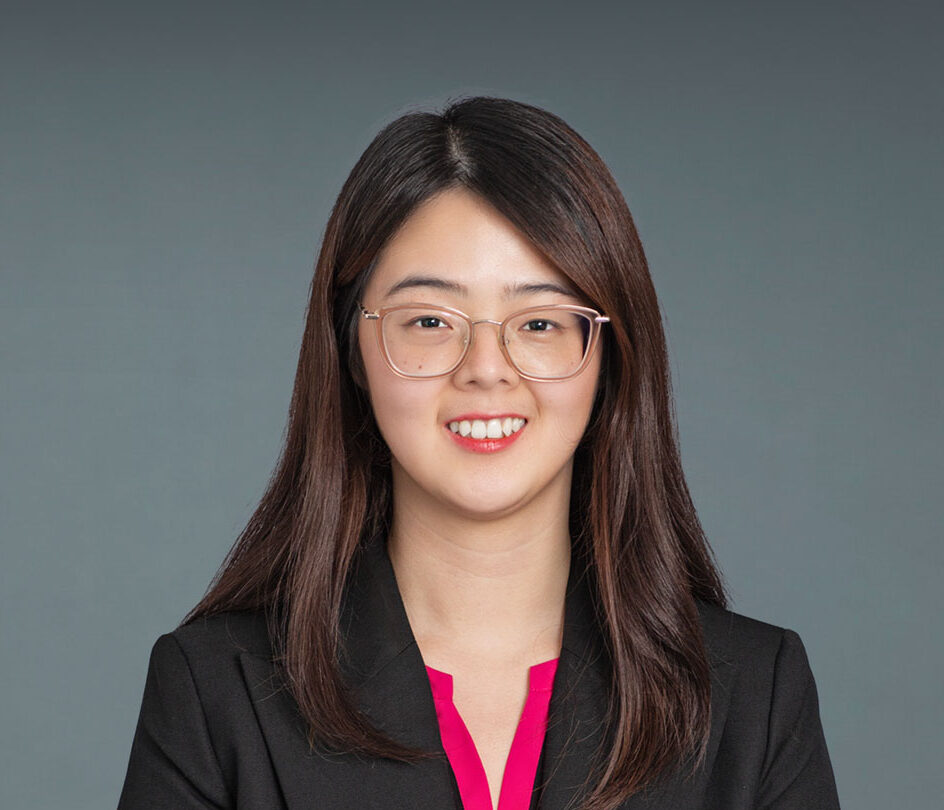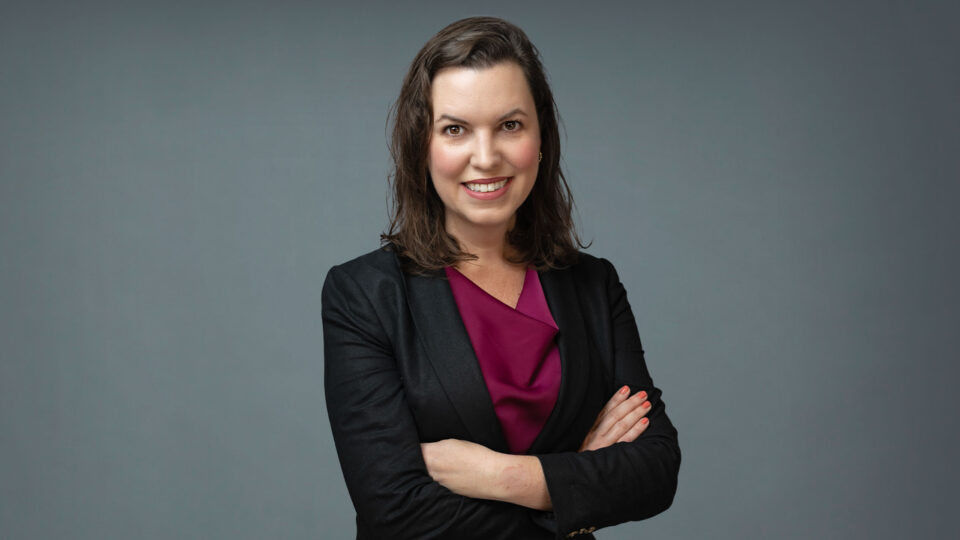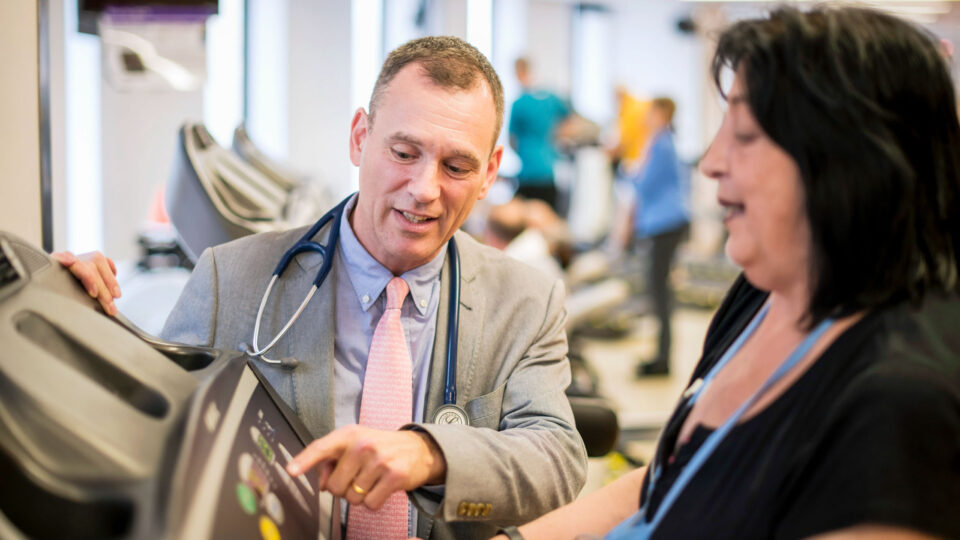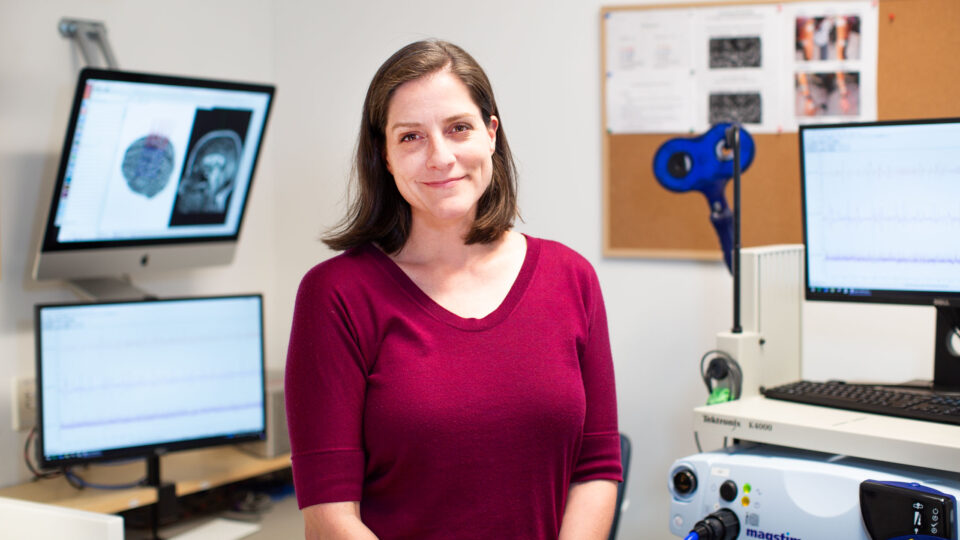Although advances in cancer treatment have improved outcomes, a cancer diagnosis remains life-changing. Many patients find themselves managing a long list of physical side effects from their diagnosis or treatment that require specialized care.
Leading NYU Langone’s comprehensive oncology rehabilitation program at Rusk Rehabilitation is Yingrong Zhu, MD, one of a select few cancer rehabilitation subspecialists in the country. Since assuming leadership of the program in August 2023, Dr. Zhu has significantly expanded services and boosted awareness, doubling monthly referrals from 50 to approximately 100 per month.
Here, Dr. Zhu highlights how the program provides personalized care to help patients at Perlmutter Cancer Center achieve the best quality of life during and after cancer treatment. She also shares her recipe for success in fostering strong collaboration with referring providers.
Special Note: Each year, Rusk Rehabilitation hosts the NYU Langone Health Oncology Rehabilitation Summit, updating providers on the latest rehabilitation strategies. Past topics have included care for patients with head and neck cancer, hematopoietic malignancies, and breast cancer. Next year’s summit will focus on prostate cancer—stay tuned for details.
Physician Focus: What inspired you to subspecialize in cancer rehabilitation and lead a comprehensive oncological rehabilitation program?
Dr. Zhu: I chose this subspecialty because I really enjoy working with this patient population and the practice is diverse and intellectually challenging. There’s such a need for cancer rehabilitation services. As part of their care, patients see a team of physicians who are doing an excellent job of treating their cancer. Our program arose out of the opportunity to better address the patient’s quality of life, their function, and who they are as a whole person.
“Our multidisciplinary team treats patients who are experiencing the side effects of cancer or cancer treatment, enabling them to not just survive, but thrive, during and after their diagnosis.”
Yingrong Zhu, MD
Our multidisciplinary team treats patients who are experiencing the side effects of cancer or cancer treatment, enabling them to not just survive, but thrive, during and after their diagnosis. Our program is focused on easing common side effects of cancer treatment and restoring physical function, with the goal of helping patients return to the person they were before their diagnosis.
Physician Focus: What are the core components of the cancer rehabilitation program and how does it meet the unique rehabilitation needs of each patient?
Dr. Zhu: The program starts in the oncologist’s office, where the oncology team identifies patients who have side effects that can compromise their quality of life. These side effects may include fatigue, weakness, joint pain, swallowing problems, chemotherapy-induced peripheral neuropathy, radiation fibrosis, lymphedema, incontinence, and post-mastectomy pain syndrome.
After an oncologist refers a patient to me, I evaluate the patient for any side effects they’re experiencing and review their medical record to make sure I screen for the most common side effects associated with their prior treatment. Based on what I discover during a patient’s history and physical exam, I will generate an individualized treatment plan that incorporates the patient’s treatment goals.
Many patients have weakness or neuropathy that can affect their quality of life. I often work closely with our physical, occupational, and speech–language therapists to address these deficits and help patients regain function.
Lymphedema is also common, and we offer advanced surgical options. Our team recently welcomed fellowship-trained microsurgeon Andrew D. Cantor, MD, with whom I work closely to enhance care for these patients.
I also provide medication management, and I’m licensed to provide medical acupuncture, which can help alleviate symptoms related to cancer treatment.
Physician Focus: Can you share a success story from your program that highlights the impact of comprehensive rehabilitation throughout treatment and recovery?
Dr. Zhu: One patient with breast cancer who had a bilateral mastectomy subsequently experienced frozen shoulder, a common side effect after this surgery. She couldn’t lift her arm even 90 degrees, which makes it incredibly difficult to do activities of daily living. In her case, she was about to start radiation but couldn’t lift her arm high enough for the radiation oncologist to treat the targeted area.
“We have many anecdotal stories like the one I just mentioned, patients who get better and are incredibly grateful. During their follow-up visits, they’re excited to show off the progress they’ve made.”
I recommended medication management and physical therapy, and over time, she was able to regain full range of shoulder motion. She recently took a trip overseas where she went kayaking. She’s back to living her full life after treatment, and better than ever.
Physician Focus: How do you measure the success of the program in improving patient outcomes? What metrics or feedback have been most valuable in refining the approach?
Dr. Zhu: We have many anecdotal stories like the one I just mentioned, patients who get better and are incredibly grateful. During their follow-up visits, they’re excited to show off the progress they’ve made. Meanwhile, we’re working on gathering specific data evidence that we can publish and disseminate in academic journals.
But we do know our program is growing. When I joined in August 2023, we were receiving about 50 referrals each month. We’re now getting about 100 referrals each month.
Physician Focus: What is driving the program’s success? How do you engage referring providers?
Dr. Zhu: Initially, I met with various oncology teams to introduce my services and how I can help with the care of our mutual patients. Our oncologists are wonderful in recognizing the side effects patients are experiencing and agree that we should work to optimize patients’ entire quality of life.
“Oncologists quickly started referring their patients, but patients themselves are also helping to sell our onco-rehabilitation program. It’s a snowball effect.”
Oncologists quickly started referring their patients, but patients themselves are also helping to sell our onco-rehabilitation program. They tell their oncologists how well they’re doing, which generates more referrals. It’s a snowball effect.
Physician Focus: When should patients with cancer or treatment side effects be referred to the oncology rehabilitation program?
Dr. Zhu: As with all medical conditions, the earlier patients start treatment, the better the outcomes and the faster recovery tends to be. I see patients during the entire continuum of care, from initial diagnosis and active treatment to after they’ve completed treatment. I also see patients at the end of life, working on decreasing caregiver burden for the families and loved ones of these patients.
We also offer prehabilitation for patients who will be undergoing extensive surgeries that are associated with common side effects. We can optimize their function prior to surgery so they have better surgical outcomes and fewer postoperative side effects.
Physician Focus: For peer physicians interested in establishing or expanding oncological rehabilitation services, what practical advice would you offer?
Dr. Zhu: You need a point person who is passionate about oncology rehabilitation and who will drive this program. The point person should meet with oncology teams, on video or ideally in person, to discuss the services they can provide to help this patient population thrive through cancer diagnosis to posttreatment.






